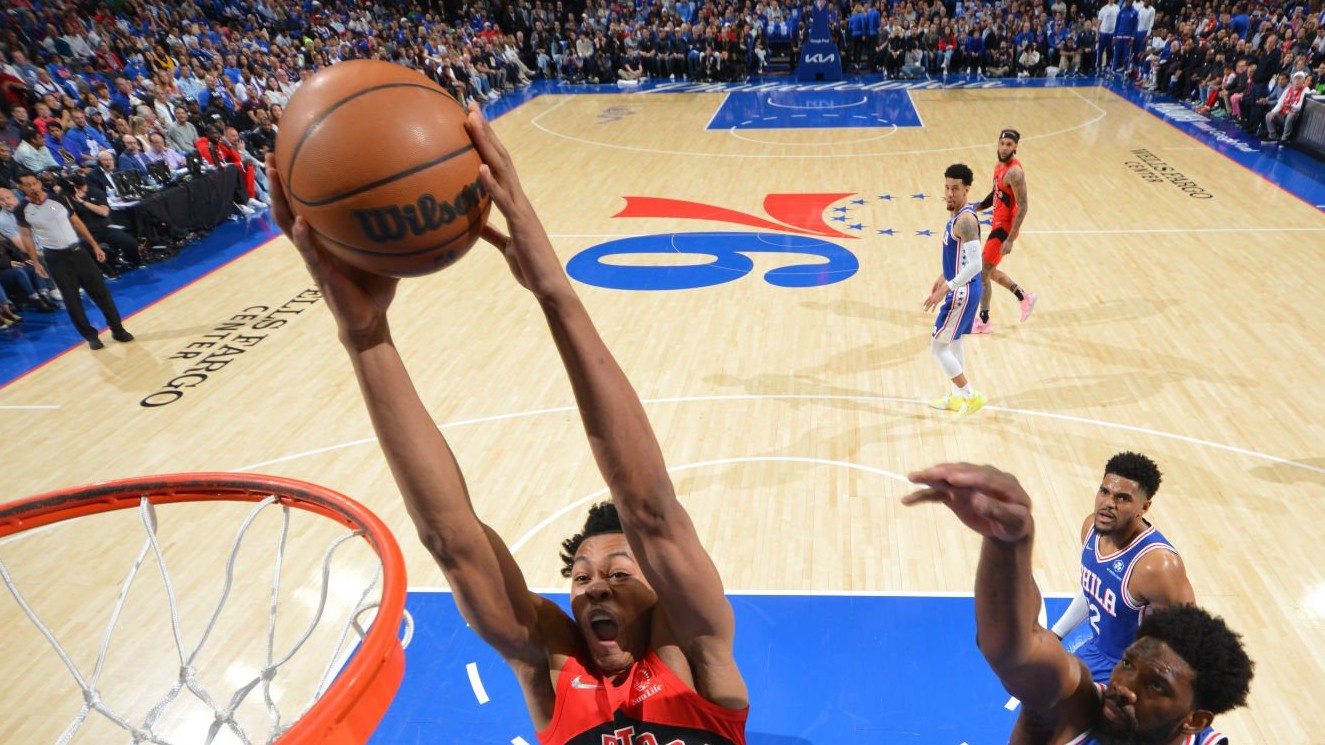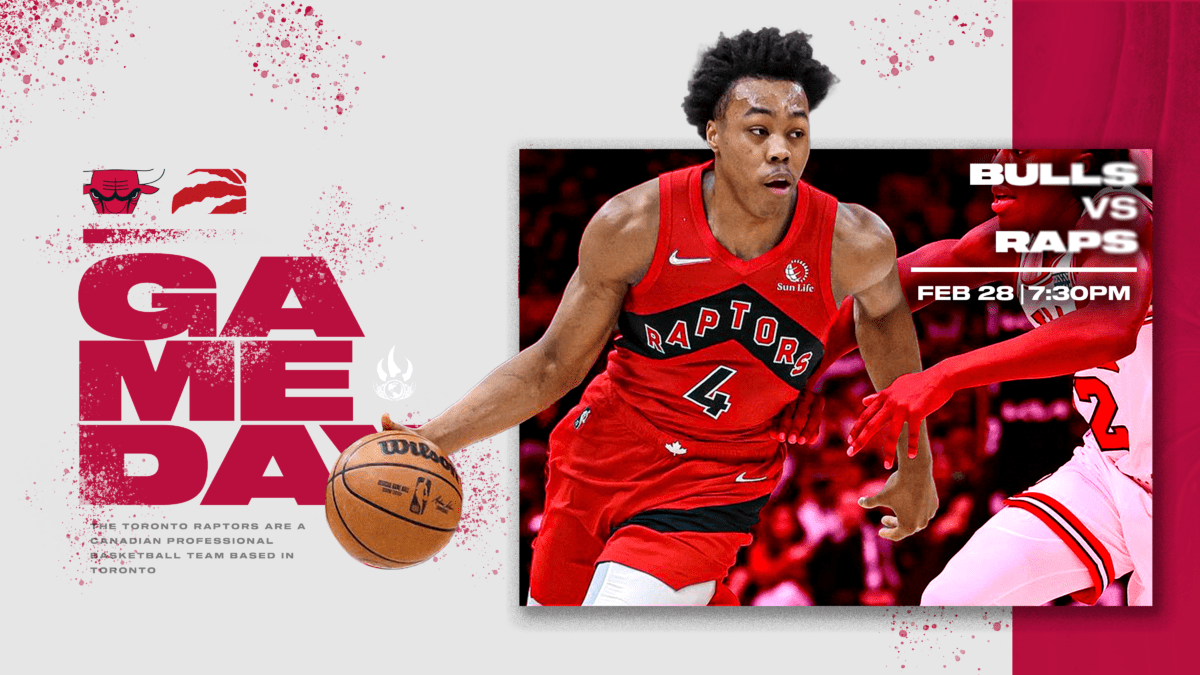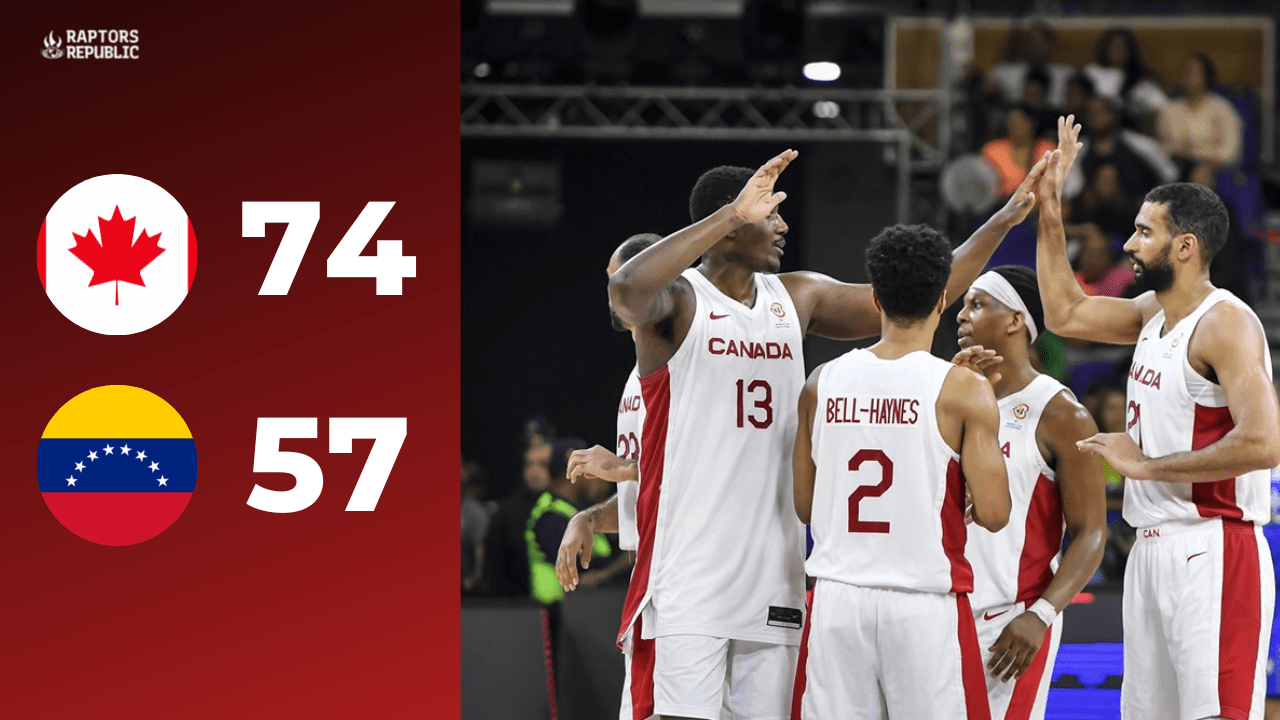It didn’t take long for the Toronto Raptors to play to the trope that super sophomore Scottie Barnes would be playing point guard for the team. On media day, 2022 — a day usually reserved for good fits and bad jokes and little more — Nick Nurse said “I hear he’s a point guard” when asked about Barnes. Later: “He’s kind of an organizing, pass-first type of guy… He likes that position, point guard. He likes that behind his name. So we’ll see if we can develop that out a little bit.”
When Barnes himself was asked about Nurse’s words? “I’ve always been a point guard,” he said. “I always had those point guard things, but I feel like I can do it all, no matter what it is. I can play any position, so I don’t really try to limit myself to one position. But I always been seeing myself as a point guard.”
Indeed, Barnes does have extraordinary passing vision and ability. He is a great communicator and organizer. Those floor-general-type skills he has in spades. But there are many more required skills to existing as a point guard in the NBA that he didn’t list on media day.
Now most of the way through the 2022-23 season, Barnes has had plenty of chances playing point guard for the Raptors. With Fred VanVleet currently out for personal reasons, Barnes has been starting — and the Raptors have been more or less winning. How has the experiment gone?
Perhaps most importantly, the Raptors have had terrible trouble scoring the basketball with Barnes at point guard. Broadly, the offense has sputtered to 110.2 points per 100 possessions with Barnes on the court and none of VanVleet, Malachi Flynn, Dalano Banton, or Jeff Dowtin jr. (With VanVleet alongside Barnes, the offense is more than 10 points per 100 possessions better, at 120.7.) And the offense was equally miserable last season without a point guard.
So the overall indicators are not good. The unit-wide effective field-goal percentage is miserable, at 49.8. It subsists on a huge diet of midrange jumpers and few threes or layups, and it’s not efficient from any area of the court. The offense is slow and ponderous.
There are a number of reasons for that, but mostly: Barnes isn’t a pull-up 3-point shooter and doesn’t have the footspeed and handle to beat anyone at any time. Point guards can usually dust primary defenders with ease to get into the lane, force rotations, and get the ball pinging around the court. And the best can pretty much always splash triples with ease if defenses turtle to prevent the first thing from happening. Guards make the world go round in the NBA.
Barnes, on the other hand, doesn’t have a blazing-fast first step to blow by initial defenders, and he usually subsists more on slow-and-measured means of beating defenders. He’s best against defenders already in rotation rather than having to force them into it. If defenders do turtle, he’s not much of a shooter off the bounce. So the Barnes-at-point-guard groups aren’t creating much from their points of initiation.
Barnes is averaging very low efficiency as a pick-and-roll handler this season (after more of an up season as a rookie, in lower frequency), largely because defenders switch everything and force him to drive into the thicket. The results with Poeltl haven’t been any better, although it’s the first time in Barnes’ career he’s playing with a high-level screen-and-roller, so he deserves time to master the beats and patterns of driving into the paint with someone rolling alongside him. (They’re getting there, particularly with handoffs that pivot into pick and rolls, and Barnes is an unselfish driver almost to a fault.) Barnes is starting to learn how to take and keep the space created by Poeltl’s big body in two-man actions.
But those are small steps towards a far-away target. Until Barnes is willing to shoot 10 triples a game or power the ball down opponents’ throats 15 times a game, he’s likely not creating enough advantages to be a high-volume pick-and-roll handler. And it’s hard to be a successful point guard any other way. The best initiators find an advantage and hit it with a hammer, repetitively, boringly, until defenders say uncle. Barnes is almost too creative; he rarely attacks the same defense the same way twice in a row.
In many ways, even the golden archetype of Barnes-as-primary-creator has to defer in clutch time to players who are more capable pull-up shooters; Giannis Antetokounmpo runs some pick and rolls (not a ton: fewer than, say, Pascal Siakam) but mostly acts as a play finisher to end games with Jrue Holiday and Khris Middleton taking more traditional point-guard duties.
Ultimately, there isn’t much of a precedent for a player with Barnes’ enormous length and relatively poor first step and jumper being a point guard, let alone succeeding as one. No matter how impressive Barnes is as a decision-maker — and, again, he is spectacular — there’s a reason that most point guards don’t look or play like him.
There are advantages to that element of unprecedented, of course. He’s a more willing passer than most point guards, and he’s audacious at finding cutters. On multiple possessions in the fourth quarter against the Detroit Pistons, Precious Achiuwa tried to isolate and score, finding no success. He gave the ball to Barnes for one touch, then cut, found the ball in an advantageous spot immediately back from Barnes, and scored the and-1. Barnes will disengage an action early if he sees a cutter, throwing the entire gameplan out the window in basketball’s version of “it’s sunny out, I can answer the teacher’s questions, let’s just get out of here.” That’s really good — plenty of lead guards, including VanVleet, can be too committed to scripted actions and not committed enough to the advantages that arise in between the lines of dialogue.
And it helps that Barnes is absolutely gigantic. When opponents stow a guard on him, Barnes can move him into the post, square his hips from any angle, and toss in the hook with ease. Those are easy points. His size also shows up in Toronto’s huge offensive rebounding rate when Barnes is at point guard.
Ultimately, those positives aren’t outweighing the negatives. Barnes isn’t able to create advantages at will, and that’s the most important job of a point guard these days. (The teams, by the way, with low-usage, non-initiating point guards are either terrible teams or have elite creators starting often at shooting guard or small forward — think Zach LaVine or Bradley Beal or Jayson Tatum.) NBA offenses are built around advantage creation. To sacrifice that isn’t worth any of the other positives of starting Barnes. Against the Cleveland Cavaliers, with Donovan Mitchell and Darius Garland going berserk from deep, Toronto simply couldn’t keep pace; the shot quality wasn’t there, let alone the shot making.
So what are the next steps for Barnes in his journey to become a full-time point guard? He could work on building a faster first step (difficult) or tightening up his handle so he can functionally blaze past defenders with simple crossovers (difficult, but more realistic). His jumper needs to become significantly tighter, faster, and more malleable so he can splash triples off the bounce (perhaps realistic, but at least several years out). Or, more likely, the Raptors simply accept that there are offensive sacrifices to playing Barnes at point guard. He does a huge number of things well, but asking him to create advantages for the team minimizes those strengths and instead emphasizes his weaknesses.
It’s not clear at this point if Barnes’ future is at the point guard spot. There are real reasons why so many of the best teams start point guards at the point guard spot, rather than forwards. Barnes has plenty of time to experiment in which position he’s best employed. But it’s possible that even after years of experimentation, he will be at his best as a forward with point guard skills — rather than going all the way to point guard.



